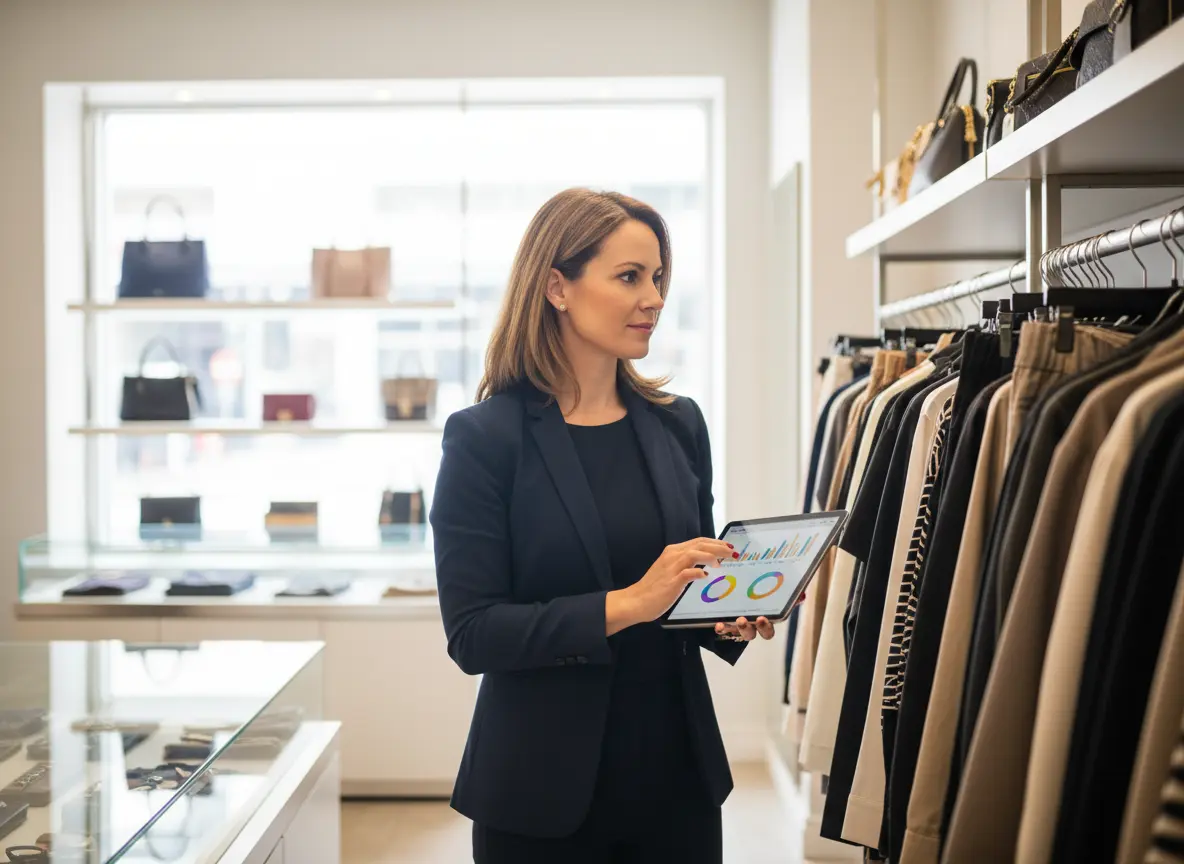The Annual Agony: A Retailer’s Guide to a (Mostly) Painless Inventory Count
Ah, year-end. That magical time filled with festive cheer, hopeful resolutions, and the soul-crushing, pizza-fueled ritual that is the annual physical inventory count. It’s the one event on the retail calendar that makes everyone question their life choices. You, your staff, even that one mannequin in the corner that seems to be judging you—everyone feels the dread.
But what if it didn’t have to be a complete descent into madness? What if you could approach this necessary evil with a plan that minimizes chaos, maximizes accuracy, and leaves you with enough sanity to actually enjoy the new year? It’s possible. Mostly. Let’s be realistic. This guide won’t make counting thousands of tiny items fun, but it will make it smoother, faster, and significantly less painful. So grab a coffee (or something stronger), and let’s get your store ready for the great count-off.
Pre-Count Prep: Your Sanity-Saving Checklist
The success of your inventory count is decided long before the first item is scanned. A little bit of planning goes a long way. Think of it as preparing for a marathon; you wouldn't just show up and start running without stretching, would you? (Don't answer that). Proper preparation is the difference between a streamlined process and a disorganized free-for-all that ends with you finding a rogue box of holiday-themed socks in July.
Tidy Up Like Your In-Laws Are Visiting
Let’s be honest: your stockroom has seen better days. It's time to face the music. Before you even think about counting, you need to clean and organize. A tidy space is an easily countable space. This means:
- Consolidating products: Get all the same SKUs together. No more finding a single, lonely sweater hiding in a box of coffee mugs.
- Clearing aisles: Your team needs to move freely without tripping over boxes of "miscellaneous" items from 2019. Safety first, people.
- Processing returns and damages: Deal with any outstanding returns, damaged goods, or items waiting to be sent back to the vendor. Count them separately or get them out of the building entirely. You don’t want this stuff muddying your final numbers.
A well-organized stockroom and sales floor will dramatically cut down on counting time and reduce the likelihood of errors caused by sheer confusion.
Map Your Battlefield (and Your Store)
Don't just send your team out with scanners and a vague sense of purpose. Create a strategy. Divide your store and stockroom into clearly defined, manageable zones. Use a floor plan and label each section (e.g., "Zone A: Women's Outerwear," "Zone B: Front Cash Wrap," "Stockroom: Shelves 1-4"). Assign teams or individuals to specific zones. This systematic approach prevents the two most common inventory nightmares: double-counting an area and missing one entirely. Provide each team with a map and a checklist to sign off on as they complete each zone. It’s a bit like a military operation, but the only casualty should be your inventory variance.
Rally the Troops (and Bribe Them with Pizza)
Your team is your most valuable asset during an inventory count, so treat them like it. A pre-count meeting is non-negotiable. Clearly explain the process, the tools they’ll be using, and the importance of accuracy. A single misplaced decimal can throw everything off. Ensure everyone knows how to handle discrepancies, what to do with "found" items, and who their point person is for questions.
And let’s talk about morale. An inventory count is a long, tedious slog. Keep your team fueled and motivated. This means snacks, drinks, and yes, the ceremonial inventory pizza. Pro tip: Don't skimp. This is not the time for generic, cardboard-crust sadness. A happy, well-fed team is a focused team that’s less likely to start counting the ceiling tiles out of sheer boredom.
Keep Business Humming While You Count
One of the biggest headaches is deciding what to do with your actual customers during the count. Closing the store is an option, but it means a full day of lost revenue. Counting after hours is another, but that leads to exhausted employees and potential overtime costs. If you choose to count during business hours, you risk a chaotic environment where your staff is torn between counting stock and helping shoppers.
Your Robotic MVP on Count Day
This is where an extra set of hands—robotic hands, in this case—can be a game-changer. Imagine your team is deep in the trenches of the stockroom, trying to decipher a SKU on a dusty box. Meanwhile, a customer walks in. Instead of being ignored or forcing a counter to break their focus, they're greeted by a friendly, helpful assistant. That’s the power of having Stella at your entrance. While your human team is focused on the critical task of counting, Stella can:
- Greet every single customer so they feel welcomed, not ignored.
- Answer common questions like store hours or return policies, freeing up your staff.
- Promote a special "Inventory Clearance" sale on items you’d rather sell than count. This is a brilliant way to turn a logistical challenge into a sales opportunity.
With Stella managing the front of the store, your team can concentrate on achieving an accurate count without sacrificing the customer experience or missing out on sales. She never gets tired, never needs a coffee break, and will never, ever ask, "Are we done yet?"
The Count Itself: Surviving the Trenches
The prep is done. The team is briefed. The pizza is on its way. Now it's time for the main event. Executing the count efficiently is all about process and oversight. This is where your careful planning pays off and prevents the day from descending into a slapstick comedy of errors.
Choose Your Weapon: Scanners vs. Spreadsheets
How you physically count matters. The two main approaches are the modern "scan and go" and the old-school "tag and bag."
Barcode Scanners: This is the fastest and most accurate method if your inventory is properly barcoded. Data is captured instantly, reducing human error from manual entry. The downside? The upfront cost of scanners and software, and the potential for technical glitches.
Manual Count Sheets: The classic clipboard-and-pen method. It’s low-tech and inexpensive, but highly susceptible to human error—from illegible handwriting to simple miscounts. If you go this route, use a two-person team system: one person counts, the other records. This provides a built-in check and balance.
Whichever method you choose, consistency is key. Ensure every single counter is using the exact same process.
The Art of the Spot Check
Trust, but verify. Even with the best team and the best technology, mistakes happen. As the count progresses, have a manager or team lead perform random spot checks in zones that have been marked as "complete." Select a few items, recount them, and compare the number to what was recorded. This simple step can catch systemic problems early on—like a scanner that isn't working properly or a counter who thinks "approximate" is good enough. It's far easier to fix an issue in one zone than to realize your entire count is wrong at the very end.
When the Numbers Don't Add Up
It's the moment of truth. You’ve finished counting, and you compare your physical count to what your inventory system *thought* you had. Discrepancies are inevitable. This is known as shrinkage, and the average retail shrinkage rate is around 1.6%, according to the National Retail Federation. Don't panic. Investigate the largest discrepancies first. Could it be a receiving error from a recent shipment? A misplaced box? Or, unfortunately, a sign of theft? Analyzing these variances is one of the most valuable outcomes of a physical count, providing crucial insights into your operations.
A Quick Reminder About Stella
Once you’ve recovered from your inventory count and are staring into the void of data analysis, remember that having an automated assistant can make every other day of the year easier. An AI retail assistant like Stella is designed to handle customer engagement and promotions, freeing you and your staff to focus on higher-value tasks—so you have more energy for the fun stuff... like next year's inventory.
The Aftermath: Using Your Data for Good
Congratulations, you survived. The count is over, the last pizza box has been recycled, and your store is back to normal. But the work isn’t quite done. The data you just spent hours collecting is a goldmine of business intelligence. Don't just file it away.
Use your accurate inventory numbers to:
- Identify your rockstars and your dust-collectors. Which products are flying off the shelves, and which ones haven't moved in a year? This data should directly inform your purchasing decisions for the coming year.
- Pinpoint shrinkage problems. High variance in a specific department might point to a need for better security or process improvements in receiving.
- Optimize your store layout. Now that you know exactly what you have, you can plan your merchandising more effectively to move slow stock and highlight bestsellers.
The annual inventory count may feel like a chore, but it's one of the most important health check-ups you can give your retail business. So put your feet up, analyze those numbers, and start planning how to sell all that stuff so there’s less to count next year. You’ve earned it.





















